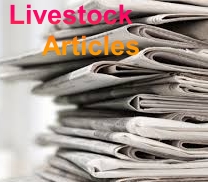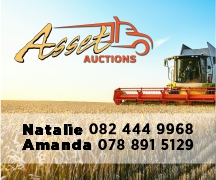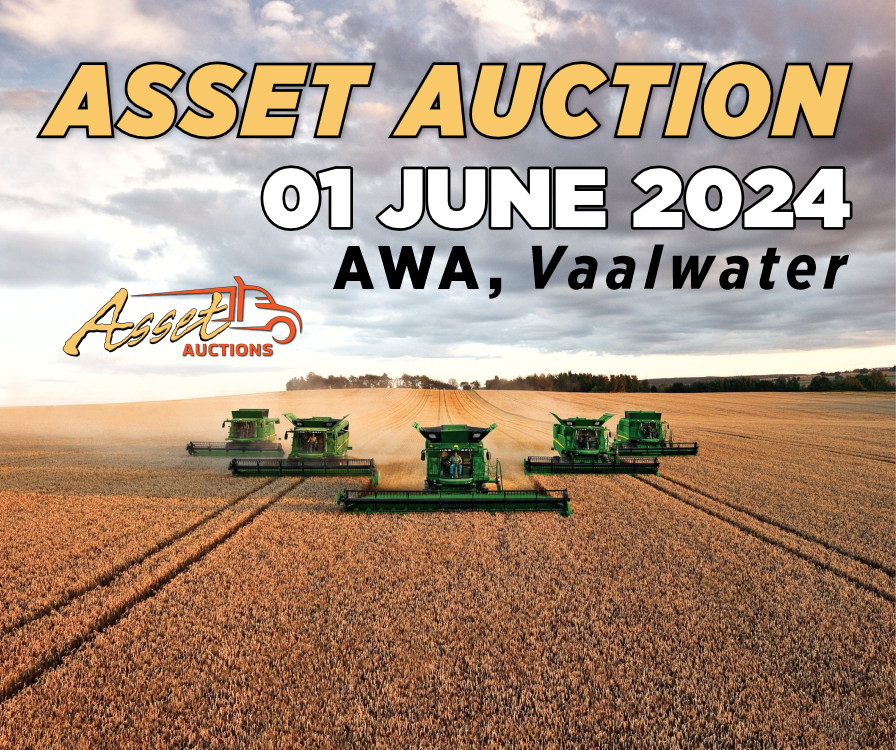Beef Production in SA
Hereford cattle produced near Villiersdorp in the Western Cape.
Beef production in South Africa has a rich heritage, with cattle being used in the past and even today for different reasons in various cultures throughout the country. Production takes place almost across South Africa, with different breeds being suited to different climatic conditions and areas.
There is also a large variety of farmers, ranging from subsistence to large commercial producers and breeders.
Beef Cattle Digestion
Cattle in South Africa belong to a class of animals that are known as ruminants, because they have four compartments to their stomach and chew their cud. The Beef Cattle digestive system allows ruminants to digest forages that single stomach animals, such as poultry or swine, and humans are unable to digest. To feed beef cattle efficiently, a farmer needs to understand the digestive process.
Farmers need to understand how cattle's digestive system work for optimal feeding.
When the cow first eats, it chews its food just enough to swallow it. The food then travels to the first two stomachs, namely the rumen and the reticulum.
The rumen is the largest compartment of the cattle’s stomach and is filled with billions of bacteria, protozoa, moulds and yeast that do most of the digestion of feed for the cow.
These microbial organisms are highly adaptable, allowing cattle to ingest a large variety of feeds, from grass and hay to corn stalks and silage. Different microbes, however, are responsible for digesting different feeds, which is why cattle are sensitive to sudden changes in their diets.
As a matter of fact, sudden changes to their diet can actually be lethal, so new food should be introduced slowly.
The microbes produce volatile fatty acids, which are absorbed directly through the rumen wall and supply up to 80% of the energy needed by a cow, as well as protein, essential amino acids and certain vitamins from digested plant fibre.
Since the microbes can use nitrogen to make protein, the cows are able to eat urea and other sources of non-protein that would kill non-ruminants.
For microbes to work efficiently, the food should be in small pieces. Cows therefore regurgitate and re-chew their food several times, a process known as rumination.
The reticulum helps to trap large feed particles, first to prevent it from going onto the next section of the stomach and secondly to collect it for additional rumination. The reticulum looks like a honeycomb and also helps to trap foreign objects that could damage the stomach.
The omasum is the third compartment. Amongst others, it works like a filter sending large particles back to the reticulum and rumen, while allowing small particles to move through to the abomasum, which is also known as the “true stomach.”
Another function of the omasum, is to squeeze water from the feed, aiding the production of saliva, which is important in the rumination process.
The abomasum works almost like the human stomach, producing acid and enzymes to digest protein. Workings of the lower digestive tract in the small intestine and large intestine is similar to that of single stomach animals.
Cattle Production Industry in SA
The South African cattle industry is extremely dualistic, characterised by a highly developed formalised sector on the one end and an emerging to subsistence sector on the other end. Commercial farmers might have beef cattle as their only stream of income, but in most cases cattle production is seen as a way of diversifying production and market risks and adding value to production.
Most of South Africa's cattle are raised under semi-extensive to extensive conditions.
Farmers, for example, might keep cattle on their poorer soils that are unsuited for planting or they might use the cattle to add value to grain production by allowing the animals to graze crop stubbles after the harvest or incorporating feeding crops in their crop rotations.
Regenerative farmers also use ultrahigh density grazing, also called strip grazing, because the movement of the animals over the land in combination with their urine and manure helps to improve soil life.
The commercial farmers who keep cattle can be differentiated into two groups, namely stud farmers or commercial farmers. Many of the stud farmers, however, also have a commercial herd to which they revert animals that fail to meet the criteria to be included in the stud.
The stud farmers produce pure-bred animals that are aimed at improving the genetic performance of animals. A commercial cattle farmer, for example, may buy offspring or semen of a specific stud bull to improve specific genetic traits in their herds.
Beef Farming Tradition in SA
Cattle production is deeply rooted in the culture of many South African societies, as cattle were historically seen as a sign of power and wealth because of their huge contribution to household food security through milk and meat production.
A brown-speckled Nguni cow.
But cattle also had other major advantages, they helped to work the lands and carry heavy loads as draught animals and they provide many valuable by-products, such as leather for clothing, horns for containers and manure to be used as fuel and fertiliser sources as well as the plastering of walls and floors.
Cattle was also used to calculate bride wealth, a payment, called lobola, which had to be made to the head of the family of a bride as a way to strengthen ties between the respective families.
Even though they might no longer own cattle, many members of these societies still follow this tradition today, with the value of the financial contribution being linked to the price of cattle.
Emerging Agricultural Sector
Cattle Beef in South Africa.
The subsistence agriculture sector presents huge opportunities for growth as it is characterised by large inefficiencies, with many farmers leaving their cattle relatively unattended on communal land.
The cattle might be kept for years on end, with little attention being paid to the productive capacity and economic value of the animals at different ages.
The animals might be used for the pot or sold in the informal market. Some farmers, however, may accumulate animals, because they still associate cattle with wealth.
The emerging sector has become more formalised over the years thanks to government efforts and those of the Red Meat Producers’ Organisation and the National Emergent Red Meat Producers’ Organisation. Amongst others, efforts are made to improve the genetic quality of these farmers and to also give them access to land and credit to improve and grow their businesses.
The efforts are generally aimed at allowing these farmers to participate in the commercial supply chain and to help address the growing demand for protein.
Cattle Production Regions in SA
Since most of the cattle in South Africa are raised under extensive and semi-extensive conditions, the total number of cattle produced in the country are extremely climate dependent, with farmers generally downscaling production during times of drought when there is a shortage of graze and feed and then rebuilding herds during the better years.
Climate change, which is predicted to result in more extreme weather conditions in South Africa, is therefore seen as a major threat to livestock production.
Total cattle numbers in South Africa between 1996 and 2020, fluctuated between 12,5 million at its lowest in August 2019 and 14,4 million at its peak in February 1998, according to livestock numbers estimates of the National Department of Agriculture. Roughly 40% of these animals belong to the emergent and subsistence sector, whereas the rest belongs to the commercial sector.
Cattle are produced throughout the country, with the Eastern Cape, by far having the largest number of cattle, followed by KwaZulu-Natal and the Free State. In August 2019, the Eastern Cape had just over 3 million cattle, whereas KwaZulu-Natal had roughly 2,5 million and the Free State 2,1 million head of cattle.
The North West had close to 1,6 million, whereas Mpumalanga had just over 1,2 million. Limpopo had 898 491 head of cattle, whereas the Western Cape had 488 459, the Northern Cape 432 907 and Gauteng had 245 513 head of cattle.
Feeding of Beef Cattle
Cattle need protein, energy, water, fat, minerals and vitamins in their diet to grow efficiently, with the amounts varying according to the production environment, the age of the animal, the time of year and the production goals and stages.
The nutritional demand of an animal will greatly depend on its age and phase of production.
Despite this, a beef animal generally consumes up to 3kg of feed a day for every 100 kg of body weight, and needs access to between 20 litres to 70 litres of water per day, depending on climatic conditions.
It is expensive to feed cattle, so most cattle in South Africa are either raised on veld or pasture. Once they reach a certain age, the cattle may then be finished for the market in a feedlot, where they will receive pre-formulated mixed rations.
With veld grazing, the cattle are on natural land that comprises sweetveld, sourveld or a combination of the two. The cattle have the opportunity to ively graze according to what they find palatable, with the diet being high in roughage and fibre. Farmers usually supplement these diets with mineral licks and other additives to prevent nutritional shortages.
Pastures may consist of grasses and legumes, such as kikuyu, clover and lucerne, specifically planted to feed the cattle. Alternatively, the cattle may also be allowed to graze crop stubbles after it has been harvested.
High quality legume hay, such as lucerne and clover usually contain enough protein and carbohydrate for growth and maintenance, whereas poor quality feed, such as grain straw and grass straw should be supplemented to increase energy and protein intake.
Farmers need to understand the way in which the digestive system of cattle works for optimal feeding. The cow has four compartments in its stomach, with a lot of digestion being done by microbial organisms. Different microbes are responsible for digesting different feeds, which is why new diets should be introduced slowly to prevent stomach problems.
Prevent Overgrazing
Keeping larger numbers in a group is easier than managing lots of small groups of animals.
Cattle should be managed carefully to prevent an overgrazing of veld or pasture. Overgrazing is not only detrimental to the recovery of plants and harmful to the environment, but also has a negative impact on farmer bottom lines by reducing the carry capacity of a farm. Farmers, in effect, either have to reduce stock numbers in line with the reduced capacity or buy more feed to maintain the same number of animals in their herd.
Keeping cattle too long in the same camp may also result in the trampling of species and cause erosion.
To prevent overgrazing, farmers need to know the number of cattle the land is able to carry, called the carry capacity, and carefully rotate the movement of their animals to ensure the plants have enough time to recover before they are grazed again.
Farmers, who do not rotate their animals, because of a lack of land or for other reasons, not only have to cope with the deterioration of land, but also a build up of parasites which might affect their animals negatively.
Farmers should preferably have a minimum of ten camps and not revisit a camp for at least three weeks after it was grazed, with the timing depending on various factors, such as the plant species, the size of the herd, grazing impact and climatic conditions.
Plants, for example, take longer to grow during cold climatic conditions, so the rotation time might be longer in winter than in summer, when there is an abundance of sunlight and heat to foster plant growth. The impact of adverse climatic conditions, such as droughts and rain damage, on the carry capacity of the land, should also be considered.
In times of drought, for example, farmers might be forced to reduce their herd numbers and sell lambs earlier than usual to ensure there is enough food for the core herd. Food might also have to be brought in to address on-farm shortages, depending on the availability and cost of native feed sources which might have increased due to the adverse climatic conditions.
Farmers generally divide their pastures or land into camps to control the animals, moving cattle from one camp to another to give the camps enough time to recover before they are grazed again. The size of the groups of animals will also have an impact on the length of time animals should be allowed to stay on the same land.
Having less animals in a group will allow the group to stay on the same land for longer times, but it may also result in farmers having many small groups of animals that need to be managed separately over the camps.
With high density grazing, large numbers of stock are managed with electric wiring, to graze small areas over a short period of time. The aim is to mimic the impact of wild herds in nature. High density grazing is seen as an important part of regenerative farming, as the animals’ feeding habits, their manure and urine, helps to add valuable nutrients to the soil and also stimulate soil health.
While it has numerous benefits when done correctly, it requires more skill and finer attention to detail than systems where the animals are merely moved from one camp to another.
South African Beef Breeds
There are close to forty cattle breeds from which farmers can choose in South Africa. These South African beef breeds differ in terms of size, build, adaptability to different climatic and production environments, resistance to certain pests and diseases, reproduction, parenting abilities, as well as meat quality and carcass yields.
South African beef breeds are varied throughout the country.
On top of this, there may also be a huge variation between individual animals within specific breeds, due to production conditions or the genetic and physical make-up of an animal.
For the best results, farmers should choose a beef breed or the breeds, if they will farm with more than one, that will thrive under their production environment and system, and buy the best genetics they can afford of these breeds.








